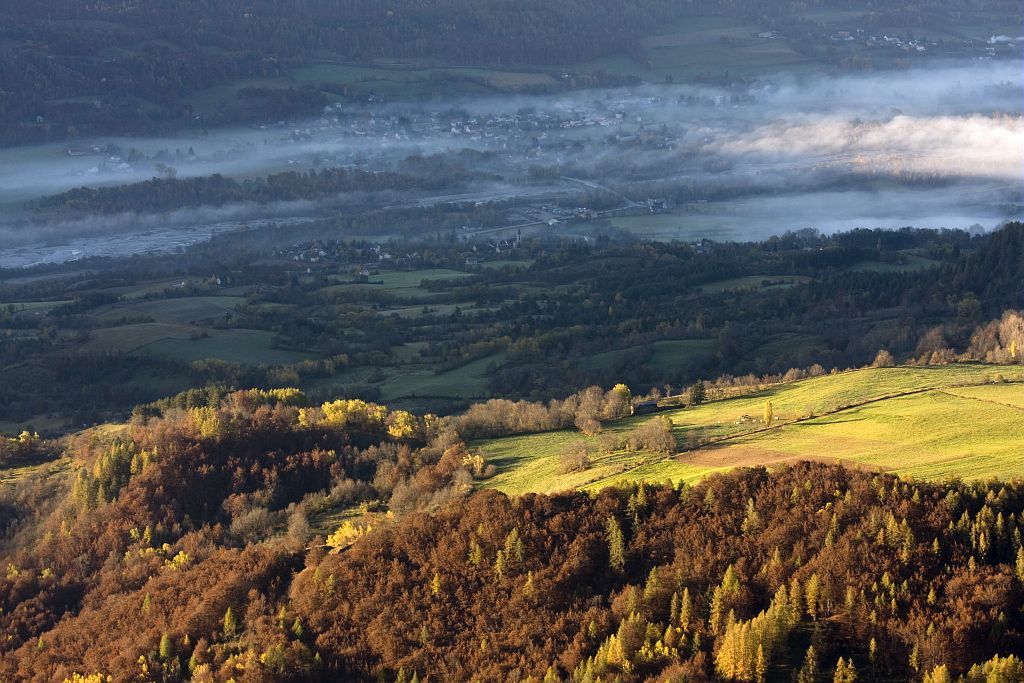
4. Stage 4: Chaillol - Champoléon
This fourth day is the least smoothly running stage, but the most interesting in terms of cycling skills. From Chaillol, after a short ascent, a series of “Enduro”-style single tracks take you below the Palastre. One last climb to Les Richards, where the paragliders take off, and then a nice descent towards Champoléon.
Description
- Then leave the GR for a steep track /!\ that joins up with the path you need to take on the left.
- Soon afterwards, don’t miss the fork, and take the left-hand path leading to Les Roranches after a few short, but intense climbs!
- When you leave the village, make the most of a meaty Enduro section /!\ leading to the source of the Doue and the Baumette cabin trail.
- You then go up towards Les Richards passing below the cabin along a very steep track and path. In Les Richards, the big ascents are already behind you, and you just need to enjoy the ride towards La Coche and the plateau of the same name. The view over upper Champsaur is breathtaking. The stage ends with a descent into the cool Champoléon valley as far as Les Borels.
- From Les Borels, walk along the cemetery towards the Méollion stream. At ‘Serre Borel’ descend along the Méollion torrent, cross the bridge of the same name and turn right to follow the Drac Blanc along the paths parallel to the main road.
- 500 m after Les Martins, turn left onto a forest track that climbs for a few minutes. Continue along this pleasant, shady track as far as the ‘Sur les Eyrauds’ crossroads.
- Descend the easy track to Les Garnauds and rejoin the Drac Noir. The end of the stage is an easy track on the left bank to the Orcières leisure centre or the resort village (a little higher up), depending on where you are staying.
- Departure : Chaillol
- Arrival : Les Borels
- Towns crossed : Saint-Michel-de-Chaillol, Saint-Jean-Saint-Nicolas, Champoléon, and Orcières
9 points of interest
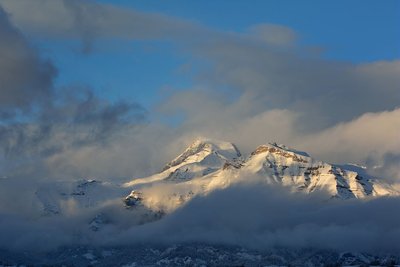
Le Vieux Chaillol, nuages et lumière du soir depuis Ancelle - Mireille Coulon - PNE  Geology and geography
Geology and geographyLe Vieux Chaillol
Easily visible from Champsaur and from beyond Gap, Le Vieux Chaillol is, like the Ecrins range, made up of granite rocks originating in the bedrock of the Cambrian era and which suddenly rose up some 5 million years ago. But the rocks of Le Vieux Chaillol have undergone a particular recrystallisation and have been transformed into metamorphic conglomerates and schists.

Vieux Pin sylvestre - Mireille Coulon - PNE  Flora
FloraScots pine
The Scots pine can be recognised by its long reddish brown trunk and sparse foliage. The needles are grey-green, slightly curved and paired. It needs a great deal of sunshine, but can make do with poor, sandy soil that is unsuited to other trees. Its wood is light and of high quality.
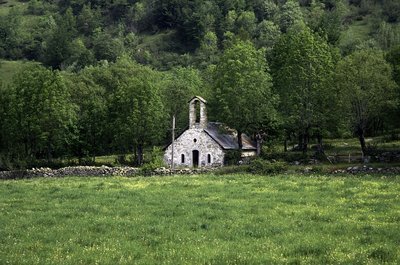
La Chapelle des Roranches - © Parc national des Écrins - Michel Francou  Vernacular heritage
Vernacular heritageLes Roranches Chapel
Built in 1780 on the site of a former chapel dedicated to Our Lady of the Assumption, the Roranches chapel is dedicated to Saint Pancras, the protector of farm animals and pets. It was built using humble architectural techniques, and is highly representative of the small places of worship in the Champsaur woodlands where, as so often in the mountains, the materials used were those that were ready to hand. Two renovation projects have been carried out on the chapel since 2013 with the support of the Ecrins National Park. The first was aimed at stabilising the barrel vault and renewing the framework and roof using the original material, slate. The second project was to restore the plasterwork inside and outside, as well as the whitewash, windows and flooring.
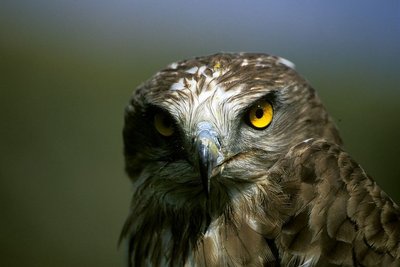
Circaète Jean-le-Blanc - Marc Corail - PNE  Fauna
FaunaShort-toed snake eagle
This bird of prey can be recognised because of its large head, its quite impressive wingspan (1.80m) and the white plumage under its wings and body. Despite its size, it rarely eat small mammals. Its food mainly consists of lizards and snakes. When it hunts, it takes up a particular position against the wind, poised in the air with its wings fully outstretched.
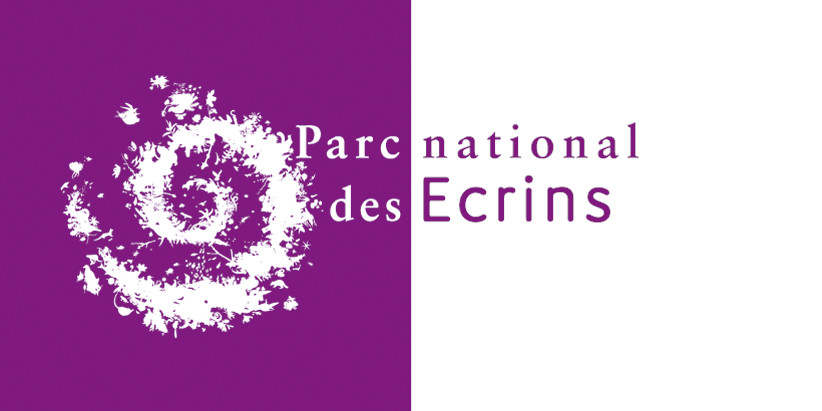
 Vernacular heritage
Vernacular heritageLes Richards
Perched up at an altitude of 1548 m above Pont-du-Fossé in the commune of Saint-Jean-Saint-Nicolas, the village of Les Richards is a haven of tranquillity. The view is breathtaking over the Autanes and the Champsaur woodlands. This is the starting point for a very popular hiking trail around the mountains or to the summit of the Palastre, and a take-off area for long-distance hang-gliders. It is not unusual for a hang-glider to land in Grenoble and sometimes even in Chamonix after a long day's flight from Les Richards! The record is 162 km, with a landing in Chamonix in 2002.
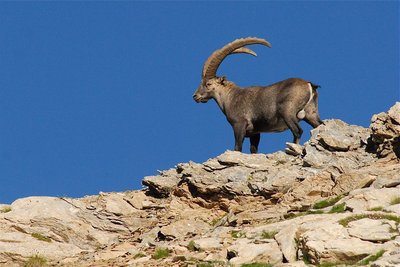
Bouquetin en été - Rodolphe Papet - PNE  Fauna
FaunaAlpine ibex
If you take a few minutes' walk at the end of the valley, you will be able to see some Alpine ibex. In September 1994, in Champoléon, some thirty animals from Vanoise area were released by Ecrins National Park rangers. This superb animal is heavier (100 kg) and less timid than the chamois, and is closely related to the domestic goat. It was almost extinct in the Alps. Today it is totally protected in France and is now safe extinction.
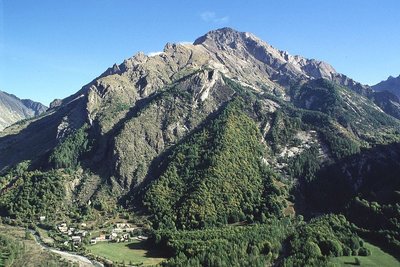
Le village des Borels - Marc Corail - PNE  History
HistoryLes Borels
This is most important village in the Chamoléon district (no hamlet bears this name). Until towards the first world war in 1914, the valley lived in a closed circuit for all everyday items. At the Borels there was a weaver (wool and hemp), a miller-baker, an ironmonger, a mason, a breeches-maker and in the other hamlets, a cobbler, two millers, a joiner and two shoemakers. The latter worked from home.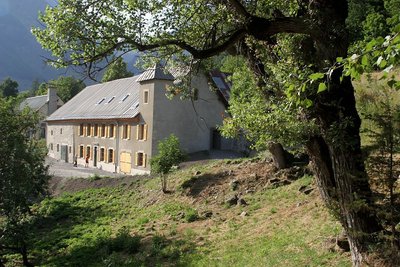
La Maison du Berger - Les Borels - Marc Corail - PNE  Vernacular heritage
Vernacular heritageThe Shepherd's House
Opened in memory of the shepherd and writer Pierre Mélet, the Maison du Berger ("the Shepherd's House") is a discovery and research centre focusing on Alpine pastoral cultures. It is a site of cultural outreach for all members of the public. There is an exhibition, educational activities for school groups, as well as a library for professionals and researchers, and a shop.
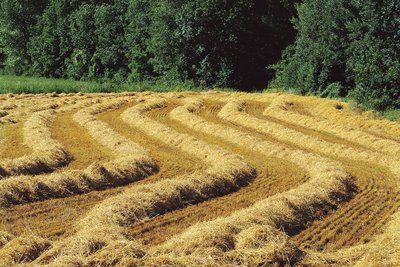
Pré fauché - Stéphane D'houwt - PNE  Pastoralism
PastoralismMown meadows
Most of the prairies are mown. They are lightly manured by the animals grazing here in spring and with additional manure. This land is rich in plant species: globeflowers, geraniums, narcissus, etc. The meadows that are only grazed are covered with large plants that are of no interest to cattle: asphodels, yellow gentians, veratrum, etc.
Altimetric profile
Sensitive areas
Golden eagle
- Impacted practices:
- Aerial, , Vertical
- Sensitivity periods:
- JanFebMarAprMayJunJulAug
- Contact:
- Parc National des Écrins
Julien Charron
julien.charron@ecrins-parcnational.fr
Peregrine falcon
- Impacted practices:
- Aerial, Vertical
- Sensitivity periods:
- FebMarAprMayJun
- Contact:
- Parc National des Écrins
Julien Charron
julien.charron@ecrins-parcnational.fr
Black grouse - winter
- Impacted practices:
- , Land
- Sensitivity periods:
- JanFebMarAprDec
- Contact:
- Fédération départementale des chasseurs des Hautes-Alpes :
Pierre-Frédéric Galvin : pierre-frederic.galvin@fdc05.com
Membre de l'Observatoire des Galliformes de montagne
Virginie Dos Santos : ogm.vds@gmail.com
Blandine Amblard : ogm.amblard@gmail.com
Black grouse - winter
- Impacted practices:
- , Land
- Sensitivity periods:
- JanFebMarAprDec
- Contact:
- Fédération départementale des chasseurs des Hautes-Alpes :
Pierre-Frédéric Galvin : pierre-frederic.galvin@fdc05.com
Membre de l'Observatoire des Galliformes de montagne
Virginie Dos Santos : ogm.vds@gmail.com
Blandine Amblard : ogm.amblard@gmail.com
Source

Report a problem or an error
If you have found an error on this page or if you have noticed any problems during your hike, please report them to us here:
